
Hyderabad State was a princely state under the British Raj in the south-central Deccan region of India with its capital at the city of Hyderabad. It is now divided into the state of Telangana, the Kalyana-Karnataka region of Karnataka, and the Marathwada region of Maharashtra in present-day India.

Mir Qamar-ud-din Khan Siddiqi also known as Chin Qilich Qamaruddin Khan, Nizam-ul-Mulk, Asaf Jah and Nizam I, was the first Nizam of Hyderabad. He was married to the daughter of a Syed nobleman of Gulbarga. He began his career as a favourite of the Mughal emperor Aurangzeb, who made him a general. Following the death of Aurangzeb in 1707, Asaf Jah refused to favour any one of Aurangzeb's warring sons and as such remained neutral. When Aurangzeb's third son Bahadur Shah ultimately emerged victorious, Asaf Jah was rotated as governor of multiple Mughal provinces until 1714, when he was created Viceroy of the Deccan with authority over six Mughal provinces in southern India from 1714 to 1719. From 1719 onwards he was involved in combating the intrigues of the Sayyid Brothers. From 1720 to 1722 he helped the new Mughal emperor Muhammad Shah eliminate the Sayyed brothers and was rewarded by being elevated to the grand viziership from 1722 to 1724.

Nizam of Hyderabad was the title of the ruler of Hyderabad State. Nizam is a shortened form of Niẓām ul-Mulk, which means Administrator of the Realm, and was the title bestowed upon Asaf Jah I when he was appointed Viceroy of the Deccan by the Mughal Emperor Farrukhsiyar. In addition to being the Mughal Viceroy (Naib) of the Deccan, Asaf Jah I was also the premier courtier of the Mughal Empire until 1724, when he established the independent monarchy of Hyderabad and adopted the title "Nizam of Hyderabad".

Asaf Jah VI, also known as Sir Mir Mahboob Ali Khan Siddiqi, was the ninth Nizam of Hyderabad. He ruled Hyderabad State, one of the princely states of India, between 1869 and 1911.

Mir Osman Ali Khan, Asaf Jah VII was the last Nizam (ruler) of the Princely State of Hyderabad, the largest state in the British Indian Empire. He ascended the throne on 29 August 1911, at the age of 25 and ruled the State of Hyderabad between 1911 and 1948, until India annexed it. He was styled as His Exalted Highness (H.E.H) the Nizam of Hyderabad, and was widely considered one of the world's wealthiest people of all time. With some estimates placing his wealth at 2% of U.S. GDP, his portrait was on the cover of Time magazine in 1937. As a semi-autonomous monarch, he had his mint, printing his currency, the Hyderabadi rupee, and had a private treasury that was said to contain £100 million in gold and silver bullion, and a further £400 million of jewels. The major source of his wealth was the Golconda mines, the only supplier of diamonds in the world at that time. Among them was the Jacob Diamond, valued at some £50 million, and used by the Nizam as a paperweight.

Paigah family was a noble family from the former Hyderabad State. The family maintained their own court, individual palaces, and a standing army of about fourteen thousand infantry and cavalry troops.
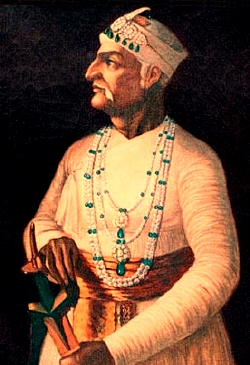
Mirza Nizam Ali Khan Siddiqi, Asaf Jah II was the 5th Nizam of Hyderabad State in South India between 1762 and 1803. He was born on 7 March 1734 as fourth son to Asaf Jah I and Umda Begum. His official name is Asaf Jah II, Nizam ul-Mulk, Nizam ud-Daula, Nawab Mir Nizam 'Ali Khan Siddiqi, Fateh Jang, Sipah Salar, Nawab Subedar of the Deccan. Sawānih-i-Deccan, a Persian work compiled by Munim Khan, a military commander during the era of Asaf Jah II gave more insight about administration of Asaf Jahis.
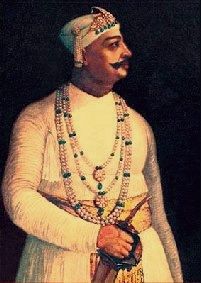
Sikander Jah, Asaf Jah III, was the 6th Nizam of Hyderabad, India from 1803 to 1829. He was born in Chowmahalla Palace in the Khilwath, the second son of Asaf Jah II and Tahniat un-nisa Begum.
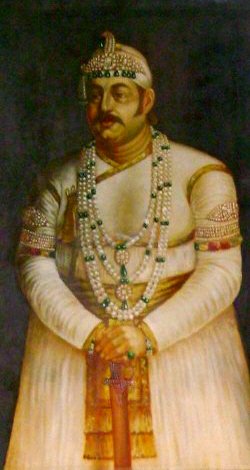
Afzal ad-Dawlah, Asaf Jah VMir Tahniyat Ali Khan Siddiqi was the eighth Nizam of Hyderabad, India, from 1857 to 1869.
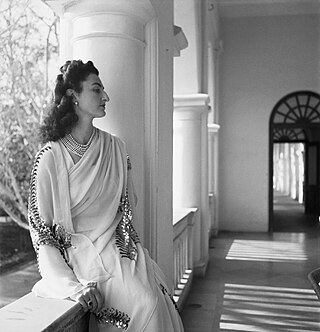
Hatice Hayriye Ayşe Dürrüşehvar Sultan, after marriage Durru Shehvar Durdana Begum Sahiba, Princess of Berar; was an Ottoman princess, the only daughter of the last caliph Abdulmejid II, who was the last heir apparent to the Ottoman Imperial throne and the last Caliph of the Ottoman Caliphate.
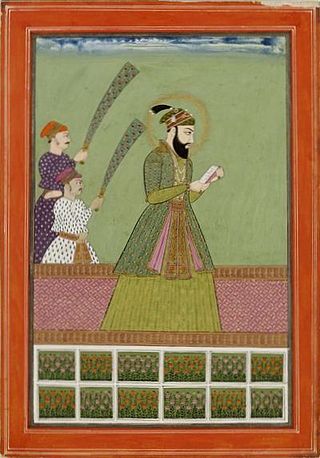
Mir Ahmad Ali Khan Siddiqi Bayafandi, Nasir Jung, was the second Nizam of Hyderabad State. He was the son of Asaf Jah I and his wife Saeed-un-nisa Begum. He was born 26 February 1712. He had taken up a title of Humayun Jah, Nizam ud-Daula, Nawab Mir Ahmad Ali Khan Siddiqi Bahadur, Nasir Jung, Nawab Subadar of the Deccan. However, he is most famously known as Nasir Jung.

Sir Mir Turab Ali Khan, Salar Jung I,, known simply as Salar Jung I, was an Indian nobleman who served as Prime Minister of Hyderabad State between 1853 until his death in 1883. He also served as regent for the sixth Nizam, Asaf Jah VI between 1869 and 1883.

The Carnatic Sultanate was a kingdom in South India between about 1690 and 1855, and was under the legal purview of the Nizam of Hyderabad, until their demise. They initially had their capital at Arcot in the present-day Indian state of Tamil Nadu. Their rule is an important period in the history of the Carnatic and Coromandel Coast regions, in which the Mughal Empire gave way to the rising influence of the Maratha Empire, and later the emergence of the British Raj.

The Asaf Jahi was a Muslim dynasty that ruled the Hyderabad State. The family came to India in the late 17th century and became employees of the Mughal Empire. They were great patrons of Persian culture, language, and literature, and the family found ready patronage.

Sir Viqar ul-Umara, Iqtidar ul-Mulk, Iqbal ud-Dowla, Secundar Jung, Nawab Muhammad Fazl-ud-din Khan Bahadur, was the Prime Minister of Hyderabad from 1893 to 1901, and also served as the Amir e Paigah from 1881 to 1902.
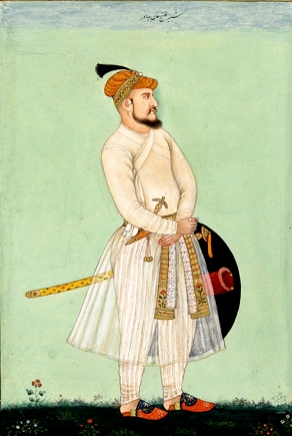
Khawaja Abid Khan Siddiqi, or Nawab Khawaja Abid Siddiqi, better known as Kilich Khan, was a Nawab and military general under Mughal Emperor Aurangzeb. He was a loyal general of the Mughal Empire. He was the father of the Mughal general Ghazi ud-Din Khan Feroze Jung I and the grandfather of Mir Qamar-ud-din Siddiqi, Asaf Jah I. Kilich Khan was a descendant of Abu Bakr, first Rashidun caliph.

The Siege of Trichinopoly was part of an extended series of conflicts between the Nizam of Hyderabad and the Maratha Empire for control of the Carnatic region. On 29 August 1743, after a six-month siege, Murari Rao surrendered, giving Nizam ul Mulk (Nizam) the suzerainty of Trichinopoly. By the end of 1743, the Nizam had regained full control of Deccan. This stopped the Maratha interference in the region and ended their hegemony over the Carnatic. The Nizam resolved the internal conflicts among the regional hereditary nobles (Nawabs) for the seat of governor (Subedar) of Arcot State, and monitored the activities of the British East India company and French East India Company by limiting their access to ports and trading.
Justice Sardar Ali Khan was former Chief Justice of Andhra Pradesh. He held various positions in judiciary.
Hyderabad was the capital of the Indian states of Telangana. It is a historic city noted for its many monuments, temples, mosques and bazaars. A multitude of influences has shaped the character of the city in the last 400 years.
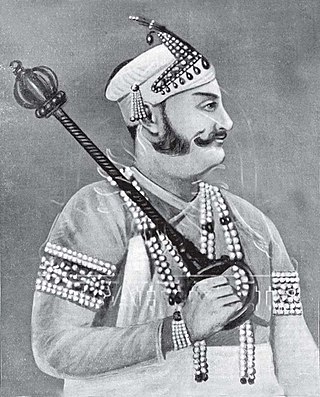
Shams ul-Umara, Shams ul-Mulk, Shams ud-Daula, Nawab Muhammad' Abu’l Fath Khan Bahadur, Taigh Jang Bahadur ['Abu’l Khair Khan II] [Imam JungIII] was an Indian nobleman and founder of the House of Paigah.
















